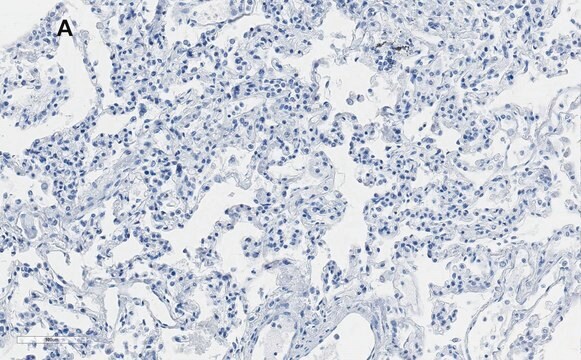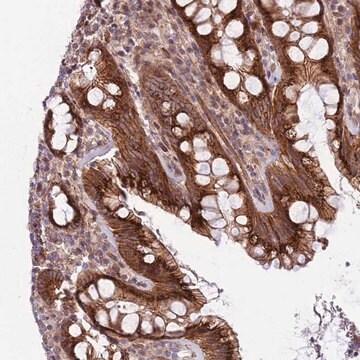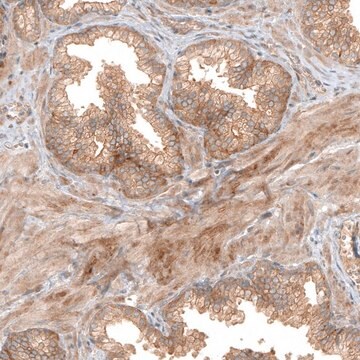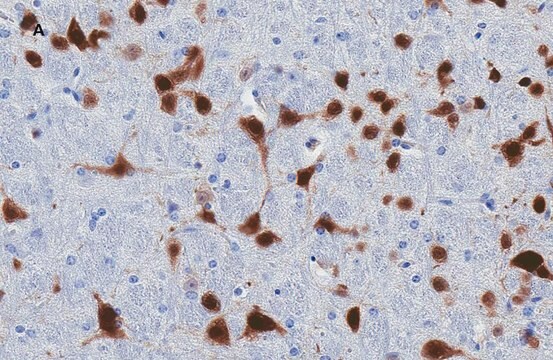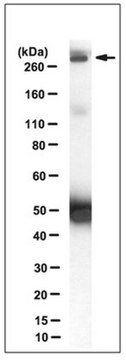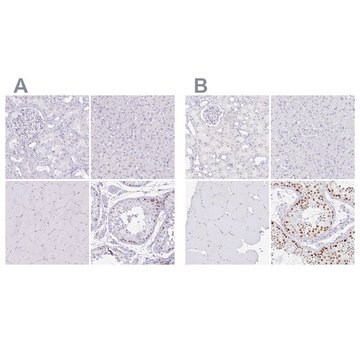MAB2077Z
Anti-Integrin αVβ6 Antibody, clone 10D5, azide free
clone 10D5, Chemicon®, from mouse
Synonym(s):
MAB2077
About This Item
Recommended Products
biological source
mouse
Quality Level
antibody form
purified immunoglobulin
antibody product type
primary antibodies
clone
10D5, monoclonal
species reactivity
human, rat, mouse
manufacturer/tradename
Chemicon®
technique(s)
flow cytometry: suitable
immunoprecipitation (IP): suitable
isotype
IgG2a
suitability
not suitable for Western blot
not suitable for immunohistochemistry
NCBI accession no.
UniProt accession no.
shipped in
wet ice
target post-translational modification
unmodified
Gene Information
human ... ITGAV(3685)
General description
The integrin alphavbeta6 is expressed on a variety of epithelial cells during dynamic processes including organogenesis, tissue injury and malignant transformation.
Specificity
Immunogen
Application
Immunoprecipitation: Effective; however because this antibody is an IgG2a, protein G or rabbit anti-mouse IgG is helpful for capture
Function blocking: 100% inhibition of alphaVbeta6-mediated cell adhesion and cell migration are achieved at a concentration of 100 μg/mL.
Not effective for western blot or immunohistochemistry.
Optimal working dilutions must be determined by end user.
Cell Structure
Integrins
Physical form
Storage and Stability
Analysis Note
HT-29 colon carcinoma cells
Other Notes
Legal Information
Disclaimer
Not finding the right product?
Try our Product Selector Tool.
recommended
Storage Class Code
12 - Non Combustible Liquids
WGK
WGK 2
Flash Point(F)
Not applicable
Flash Point(C)
Not applicable
Certificates of Analysis (COA)
Search for Certificates of Analysis (COA) by entering the products Lot/Batch Number. Lot and Batch Numbers can be found on a product’s label following the words ‘Lot’ or ‘Batch’.
Already Own This Product?
Find documentation for the products that you have recently purchased in the Document Library.
Our team of scientists has experience in all areas of research including Life Science, Material Science, Chemical Synthesis, Chromatography, Analytical and many others.
Contact Technical Service